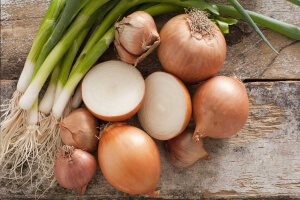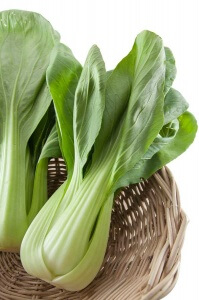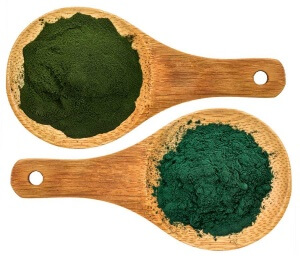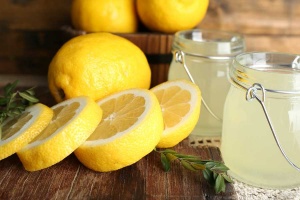Eating an alkaline diet will help you ward off disease and prolong your lifespan. Below, you will find a list of the best foods for an alkaline diet and several tips on how to make this easier to accomplish.
Below is my list of the best foods for an alkaline diet. The foods on this list are not given by importance or priority. In fact, these foods are all equally important in a general sense.
If you’re trying to follow an alkaline diet, you should consume these foods on a regular basis.
List of the best foods for an alkaline diet
1. Green leafy vegetables
Green leafy vegetables are among the best foods for an alkaline diet. We put them as the #1 best choice! Plus, there is such a great variety to choose from, you should never get tired of consuming them.
Superstars within this group are kale and other Brassica greens like mustard greens, arugula (rocket), collards, savoy cabbage, Bok choy, Napa cabbage, turnip greens, Mizuna, and watercress.
You can balance out the mild spiciness of Brassica greens with the subtle sweetness of spinach family greens.
These latter include spinach, Swiss chard, quinoa greens, amaranth greens, Lamb’s Quarters (goosefoot), and beet greens. Yes, the leaves on top of beets are not only edible, they're delicious!
In addition to the spicy and sweet greens, you can also add a few bitter greens like endive, frisée, and radicchio (chicory) for variety of taste.
Your supermarket may not carry all of the leafy greens listed above. You can usually find them, when in season, at farmer’s markets, roadside vegetable stands, and natural food stores that carry locally grown produce.
You can also ensure you have access to a greater variety of greens by planting some on your patio or backyard. Leafy greens are so easy to grow. Even a complete gardening novice should have no problem getting good results.
2. Salad lettuces
Every type of salad green you run across is strongly alkaline! Thus, you can't go wrong with raiding the salad bar at lunchtime!
Enjoy all the common lettuces like Iceberg, green leaf, romaine, butterhead, red leaf, and oak leaf. Seek out also some up and coming new stars like Mache. Mesclun mixes are essentially tender baby Brassicas that are fun to mix in with your sweet lettuces.
You can grow lettuces and other salad greens from a mixed seed packet even if all you have is a tiny balcony or an apartment window that gets partial sun! Just fill a medium sized pot with a quality potting soil.
Sprinkle some salad seeds on top. Cover them with a dusting of dirt, and water lightly! Within a few weeks, you'll be able to harvest salad greens every day to make your diet more alkaline.
3. Fresh green herbs
Fresh green herbs are also highly alkaline and bursting with vitamins, minerals, and antioxidants.
Fresh green herbs include cilantro, parsley, dill, sage, basil, thyme, oregano, marjoram, rosemary, mint, lavender, and chives. You can add herbs to almost any dish to make it more alkaline. Make herbs the star of the show with fresh pesto made from any combination of herbs or Tabbouleh (a.k.a. Tabouli).
Fresh herbs are also a very easy grow, even if you just have space for a few pots. You can save some money by starting with seeds instead of starts since most herbs can be easily grown from seeds.
Plus, you can plant extra because fresh herbs growing in small pots make wonderful presents. Not only will they brighten the recipient's day, they will give you the perfect opportunity to educate others about the importance of making their diet more alkaline.
4. Other vegetables

Thus, you can't really go wrong with eating almost any type of vegetable on an alkaline diet. However, the onion family deserves a special mention.
It is a true star among alkaline choices. Onion, garlic, shallots, scallions, and leeks are all strongly alkaline!
Keep in mind that highly processing vegetables can push them into the acidic range! So, for example, fresh tomatoes are moderately alkaline. However, highly processed canned tomatoes are moderately acidic.
Try to eat fresh vegetables as much as possible on an alkaline diet. When that's not possible, get fresh frozen vegetables. Read the ingredient label on frozen vegetables to make sure nothing else is added.
How to add moderately to strongly acidifying foods to your diet?
1. Fruits
Fruits are generally considered a healthy food. However, they are actually quite acidifying to the body. In fact, some of the healthiest fruits in terms of the antioxidants they give you are considered moderately to strongly acidifying.
Blueberries and strawberries are two good examples of this. Avocados, a fruit also called alligator pears, are an exception as they are moderately alkaline!
Smoothies have become an American obsession, especially among the health conscious. Fruit is usually the star ingredient.
To make fruit smoothies less acidifying, and even shift them into the mildly alkaline category, try adding lots of fresh greens, spirulina powder, or chlorella powder!
Spirulina is blue-green algae and chlorella is green algae. Both are strongly alkaline and highly nutritious. These algae powders will also turn your smoothie a beautiful color!
2. Meat and seafood
All forms of meat and seafood are acid forming. But some types are less acidifying than others!
Fish is less acidic than meat, especially freshwater fish like trout. Thus, if you are following an alkaline diet, try replacing meat with fish more often.
The one exception to this would be canned fish like tuna fish or canned salmon which is more strongly acidic due to how it is processed. Beef is much more acidic than chicken, turkey, and other poultry.
The main thing to remember with protein is to watch your serving size. Balance out your meal with alkaline producing vegetables. Three to four ounces is an ideal serving size for chicken and beef. This is about the size of a bar of soup.
For fish, choose a serving size that is about the size of a checking book.
3. Dairy foods
All dairy products, including milk, cheese, and yogurt are acid producing in the body.
However, pasteurization makes dairy products MUCH more acidifying. Pasteurization involves heating milk to high temperatures and holding it at this high temperature to kill off all the pathogens.
Unfortunately, this also kills all the beneficial Lactobacillus bacteria and living enzymes. It also denatures the protein in the milk. If you want to consume dairy foods that are only slightly acidic, try getting raw milk and cheeses made from raw milk.
You can also look for yogurt cultures that do not require extreme heat (just a low heating pad or the pilot light in a gas oven). You can add them to raw milk to make yogurts that aren't overly acidifying to the body.
If you have trouble getting raw milk in your state or country, be sure to avoid any dairy product that says “ultra-pasteurized”. This process denatures the milk even more.
You can also look for brands of organic milk that use lower temperatures in their pasteurization process and do not homogenize the milk. This is not as good a solution as raw milk but better than most pasteurized dairy products.
Two additional alkaline stars
We have saved two of the best foods for an alkaline diet for last.
Drum roll, please…
They are lemon juice and apple cider vinegar!
If you add either of these foods to any other food, you'll make those foods more alkaline.
Therefore, we recommend you keep these two foods on hand to help you keep your diet more alkaline at all times.
Add them to like soups, stir-fries, salad dressings, sauces, casseroles, and smoothies.











